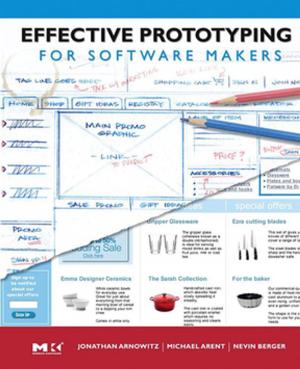3D Bioprinting for Reconstructive Surgery
Techniques and Applications
Nonfiction, Science & Nature, Technology, Material Science, Science, Biological Sciences, Biotechnology| Author: | ISBN: | 9780081012161 | |
| Publisher: | Elsevier Science | Publication: | November 14, 2017 |
| Imprint: | Woodhead Publishing | Language: | English |
| Author: | |
| ISBN: | 9780081012161 |
| Publisher: | Elsevier Science |
| Publication: | November 14, 2017 |
| Imprint: | Woodhead Publishing |
| Language: | English |
3D Bioprinting for Reconstructive Surgery: Techniques and Applications examines the combined use of materials, procedures and tools necessary for creating structural tissue constructs for reconstructive purposes. Offering a broad analysis of the field, the first set of chapters review the range of biomaterials which can be used to create 3D-printed tissue constructs. Part Two looks at the techniques needed to prepare biomaterials and biological materials for 3D printing, while the final set of chapters examines application-specific examples of tissues formed from 3D printed biomaterials.
3D printing of biomaterials for tissue engineering applications is becoming increasingly popular due to its ability to offer unique, patient-specific parts—on demand—at a relatively low cost. This book is a valuable resource for biomaterials scientists, biomedical engineers, practitioners and students wishing to broaden their knowledge in the allied field.
- Discusses new possibilities in tissue engineering with 3D printing
- Presents a comprehensive coverage of the materials, techniques and tools needed for producing bioprinted tissues
- Reviews emerging technologies in addition to commercial techniques
3D Bioprinting for Reconstructive Surgery: Techniques and Applications examines the combined use of materials, procedures and tools necessary for creating structural tissue constructs for reconstructive purposes. Offering a broad analysis of the field, the first set of chapters review the range of biomaterials which can be used to create 3D-printed tissue constructs. Part Two looks at the techniques needed to prepare biomaterials and biological materials for 3D printing, while the final set of chapters examines application-specific examples of tissues formed from 3D printed biomaterials.
3D printing of biomaterials for tissue engineering applications is becoming increasingly popular due to its ability to offer unique, patient-specific parts—on demand—at a relatively low cost. This book is a valuable resource for biomaterials scientists, biomedical engineers, practitioners and students wishing to broaden their knowledge in the allied field.
- Discusses new possibilities in tissue engineering with 3D printing
- Presents a comprehensive coverage of the materials, techniques and tools needed for producing bioprinted tissues
- Reviews emerging technologies in addition to commercial techniques















